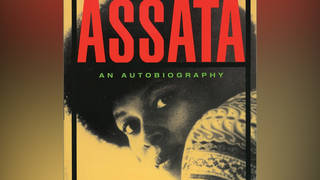
Topics
Guests
- Mariah Blakestaff reporter with Mother Jones magazine. Her new investigation is “The Scary New Evidence on BPA-Free Plastics: And the Big Tobacco-Style Campaign to Bury It.”
A new exposé by Mother Jones magazine may shock anyone who drinks out of plastic bottles, gives their children plastic sippy cups, eats out of plastic containers, or stores food with plastic wrap. For years, public campaigns have been waged against plastic containing bisphenol-A (BPA), a controversial plastic additive, due to concerns about adverse human health effects caused by the exposure to synthetic estrogen. But a new investigation by Mother Jones reporter Mariah Blake has revealed that chemicals used to replace BPA may be just as dangerous to your health, if not more. Plastic products being advertised as BPA-free — and sold by companies such as Evenflo, Nalgene and Tupperware — are still releasing synthetic estrogen. The Mother Jones piece also reveals how the plastics industry has used a “Big Tobacco-style campaign” to bury the disturbing scientific evidence about the products you use every day. Blake joins us to discuss her findings.
Transcript
AMY GOODMAN: “Are any plastics safe?” That’s the title—that’s the question of a new exposé by Mother Jones that may shock anyone who drinks out of plastic bottles, gives their children plastic sippy cups or eats out of plastic containers. For years, public campaigns have been waged against plastic containing BPA, Bisphenol-A, a controversial plastic additive. But a new investigation by Mother Jones magazine has revealed that chemicals used to replace BPA may be just as, if not more, dangerous to your health than their cousin compound.
BPA is still widely used in everything from the lining of soup cans to printed receipts, even though studies show it mimics the behavior of estrogen in the human body, and have linked it to breast cancer, diabetes, obesity and heart disease. Just last week, a study estimated the use of BPA in food and beverage containers is responsible for some $3 billion a year in healthcare costs. But because BPA can hamper brain and organ development in young children, it’s been banned in bottles and sippy cups since 2012. Now new studies show the plastic products being advertised as BPA-free, and sold by companies such as Evenflo and Nalgene, Tupperware, are still releasing synthetic estrogen.
The Mother Jones report goes on to look at how the plastics industry has used a Big Tobacco-style campaign to bury the disturbing evidence about the products you use every day.
We’re joined in Washington, D.C., now by Mariah Blake, staff reporter with Mother Jones magazine.
Mariah, welcome to Democracy Now! Just lay out what you have found.
MARIAH BLAKE: Well, essentially, there is relatively new research showing that the vast majority of plastics, at least commercially available plastics that are used for food packaging, contain BPA-like chemicals, so chemicals that are what they call estrogenic. And the—
AMY GOODMAN: And explain what BPA is.
MARIAH BLAKE: So BPA is a chemical that mimics the hormone estrogen. And estrogen plays—we all have estrogen in our bodies. It plays an essential role in various bodily functions and is also very important in human development, so the development of our brain, the development of our organs. However, too much or too little of this hormone, basically, especially during early childhood or prenatally, can set you up for disease later on in life. So, exposure—what the research shows is that exposure in the womb can then lead to breast cancer, diabetes, increased aggression, really sort of a staggering list of health problems later on in life.
AMY GOODMAN: And so, talk about what has happened since BPA has been banned.
MARIAH BLAKE: So, yes, and many people will recall that in 2008 the dangers of BPA became very widely known. There was a scare. Major retailers pulled BPA from their shelves. Customers began demanding BPA-free products, especially for children. And many manufacturers began introducing products that were BPA-free. And all of us who have children have these BPA-free products in our home, most likely. One of the—so—and in many cases, it turns out that the chemicals that were used to replace BPA, or the plastics contained chemicals that were, you know, similar to BPA—at any rate, many of these chemicals had not been tested to see whether they had similar properties to BPA, whether they mimicked estrogen, in essence. And it turns out that many of them do. So, the implication is that they could have similar effects on human health.
AMY GOODMAN: You begin your piece by telling us the story of Michael Green and his daughter.
MARIAH BLAKE: Yes.
AMY GOODMAN: Talk about that experience.
MARIAH BLAKE: So, Michael Green is—he had a two-year-old daughter. He’s somebody who works in the environmental health field. And he had heard—he had seen research suggesting that BPA-free plastics may have posed some of the same problems to human health. And—but he told me this very moving story about himself and his two-year-old daughter. Somebody else in the family had given his two-year-old daughter this pink plastic sippy cup with a picture of a princess on it, which she just loved. And every night at dinner time, they would have this battle of the wills over this pink plastic sippy cup: He wanted to give her the stainless steel sippy cup; she wanted the pink plastic sippy cup. And in the interest of maintaining peace in the household, occasionally he gave in and gave her this pink plastic sippy cup. But the decision really weighed on him. And I think that those of us who have children—I have a three-year-old son—can relate to this situation, where sometimes you do the expedient thing in the interest of peace, but you wonder if it’s the best thing for your child. And in this case, he decided that he would try to answer that question. And he runs this environment health organization, and he collected sippy cups from Wal-Mart and Toys”R”Us—Babies”R”Us, I’m sorry—and he sent them to an independent lab in Texas to be tested. And he found out that in fact roughly a third of them did contain estrogen-like chemicals.
AMY GOODMAN: And that pink sippy cup?
MARIAH BLAKE: His daughter’s sippy cup was leaching estrogenic chemicals. So his fears were founded.
AMY GOODMAN: And what can that do to her?
MARIAH BLAKE: This is the big question. We know a lot about BPA. BPA is one of the most studied chemicals on the planet. And we know that these chemicals generally are associated with a range of negative health effects. But the specific effect of any given chemical varies slightly from chemical to chemical, and we actually don’t know what chemical is leaching out of that sippy cup. So it’s impossible to know. I mean, there’s a very high correlation with breast cancer, for example, with all of these estrogenic chemicals, and with certain developmental problems. But other specific diseases vary from chemical to chemical. So, Michael Green, the way he describes it is an unplanned science experiment that we’re doing on our families all of the time.
AMY GOODMAN: We’re going to break and then come back to this discussion and talk about Big Tobacco, what Big Plastic has learned from Big Tobacco. We are talking to Mariah Blake, a staff reporter with Mother Jones. Her story is in the new issue of the magazine. It’s called “The Scary New Evidence on BPA-Free Plastics: And the Big Tobacco-Style Campaign to Bury It.” Stay with us.
[break]
AMY GOODMAN: This is Democracy Now!, democracynow.org, The War and Peace Report. I’m Amy Goodman. We are with Mariah Blake, staff reporter for Mother Jones magazine. “The Scary New Evidence on BPA-Free Plastics: And the Big Tobacco-Style Campaign to Bury It” is her new piece. What is the campaign to bury the information, Mariah Blake?
MARIAH BLAKE: Well, there are multiple facets to the campaign, but the primary—the primary objective is to cast doubt on the scientific evidence linking these chemicals to human health problems. So—and there are various ways this is done. In the case of BPA, for example, the industry funded studies, which were biased studies that found that this—that the chemical was not harmful to health. And there’s a sort of network there. They published them in certain journals that, in many cases, had links to the tobacco industry. They relied on scientists that, in many cases, had helped to discredit the science linking smoking and secondhand smoke to disease. So, in many ways, this is—they didn’t only borrow strategies and tactics from Big Tobacco; they are actually relying on the same cadre of experts that Big Tobacco relied on to bury—to bury the truth about smoking.
AMY GOODMAN: I want to turn to a video made by the plastics industry featuring the vice president of Eastman’s specialty plastics division, Lucian Boldea, speaking in the video made by the company. A pregnant woman is one of the people shown buying plastic products as Boldea speaks.
LUCIAN BOLDEA: We understand that there are concerns about plastic materials that are used in consumer products that consumers use every day. Those products include water bottles, baby bottles and food storage containers. We can see how available information about plastic materials can be confusing and how it can be difficult for consumers to tell what is really safe. We want you, the consumer, to know the facts behind our clear, tough material named Tritan. Consumers can feel confident that the material used in the product is free of estrogenic activity.
Consumers should have high expectations of the products that they use, and no one is tougher on our products than the researchers and engineers at Eastman Chemical. Most importantly, we have used reputable, independent, third-party laboratories that have used well-recognized scientific methods to prove that Tritan is free of estrogenic activity. Numerous regulatory agencies around the world have independently reviewed our data and have approved the product for use in food contact applications. Some of the world’s most recognized brands trust Tritan as their ingredient.
AMY GOODMAN: That was Lucian Boldea, who is president of Eastman Chemical’s specialty plastics division. Can you respond to this, Mariah Blake?
MARIAH BLAKE: Well, the Eastman product, called Tritan, which is the product that Boldea is speaking about in this video, is actually one of the primary focuses of my investigation. A number of independent scientists have tested this product and found that it is actually more estrogenic than polycarbonate, which is the plastic that contains BPA. And Eastman Chemical, according to internal documents which were released as part of a lawsuit, has taken pains to suppress the evidence showing that its products—or that this product, in particular, is in fact estrogenic.
AMY GOODMAN: So how is it the EPA isn’t regulating this?
MARIAH BLAKE: Well, and this is one of the most surprising things to me when I read this—when I was reporting the story. So, there are about 80,000 chemicals in circulation in the United States. Virtually none of those chemicals has been tested for safety, or a very, very small fraction of those chemicals has been tested for safety. In general, chemicals are presumed safe until proven otherwise under the U.S. regulatory system. So, when a chemical like BPA is removed from a production line, the industry will substitute another chemical that is untested, and we really, in many cases, just don’t know the health effects of that chemical. So, it’s largely an unregulated realm.
AMY GOODMAN: Tell us about George Bittner.
MARIAH BLAKE: OK. George Bittner is a neuroscientist at the University of Texas, and he has launched an independent lab called CertiChem—it also has a sister company called PlastiPure—and it tests products for estrogenic activity. And he—working with a prominent Georgetown professor, he and his staff tested, I think it was, 455 commercially available plastics that are on the market and published a paper in Environmental Health Perspectives, which is the premier NIH journal, which found that virtually all commercially available plastics have estrogenic activity. And among the plastics he tested were Tritan products, several Tritan products. And this publication, this finding, prompted a pretty big backlash from the industry. So he ended up being targeted by the industry as a result and, in fact, was sued by Eastman, which is—many of the documents that formed the basis of my story were released as a result of that lawsuit.
AMY GOODMAN: I want to read from a memo that Eastman’s senior chemist, Emmett O’Brien, wrote after customers began asking about George Bittner’s tests that showed that Tritan may still be estrogenic. O’Brien describes a meeting with Whole Foods executives who were considering replacing their polycarbonate bulk food bins with ones made from Tritan. He wrote, quote, “We called Bittner a mad scientist. They didn’t know his name actually. They asked twice, by two independent people, what we thought of them. I hemmed and hawed (ducked and dodged) saying I prefer not to comment, but we joked and pushed and flat out said the guy was 'shady' — with this non-stereotypical crowd it was a good term.” O’Brien added, “They asked if they could do their own tests — I mentioned the cost is very high and they were quick to chime in that the tests take very long.” Can you respond to that, Mariah Blake?
MARIAH BLAKE: I think you chose the most telling possible quote. So this was effective—this was the strategy they used. Firstly, they worked to discredit Bittner, and they did this through a campaign of personal character assassination and by calling his business practices into question. And secondly, they worked to discredit the science. So, one of the things that Eastman did was they claimed that the test that Bittner is using, which relies on a specialized line of breast cancer cells, had been rejected by the EPA, when in fact it hadn’t. The EPA is considering using this very line of breast cancer cells for its own screening program for what they call endocrine-disrupting chemicals. BPA is one of those.
So, the other thing they did was they commissioned their own research, so they paid labs to perform research which found that Tritan was not estrogenic. And—but if you look at—if you look at the research closely, you’ll see that it is—the studies are essentially designed in a way that guarantee that estrogenic activity will not be found. So, for instance, they use a type of rat; it’s called a Charles River Sprague Dawley rat. This rat is known to be insensitive to estrogen, so it can withstand doses, according to one Japanese study, a hundred times higher than a human female can withstand, with—and show absolutely no effect. They also used doses that are below what is known as the no-observable-effect level, so the doses that are known not to cause an effect. And they then published their own study in a scientific journal, which is—has numerous tobacco industry ties, finding that Tritan was in fact not estrogenic. So, that is essentially how they responded to the finding that their product contained these chemicals that are potentially harmful to human health: They attempted to cover it up.
AMY GOODMAN: Your report cites some leaked minutes from a 2009 meeting of the BPA Joint Trade Association, whose members include the American Chemical—the American Chemistry Council, Coca-Cola, Del Monte. During the meeting, they explored messaging strategies that included using what they called, quote, “fear tactics.” For example, “Do you want to have access to baby food anymore?” The attendees agreed that the “holy grail” spokesperson was a, quote, “pregnant young mother who would be willing to speak around the country about the benefits of BPA.” Mariah?
MARIAH BLAKE: Yes, and this is one of the most disturbing things I discovered during the course of reporting this, is that in their efforts to portray plastics as safe, they oftentimes target the groups who are most vulnerable to the effects of these chemicals. So, prenatal exposure and exposure during early childhood is potentially the most harmful, and oftentimes the marketing of these products targets pregnant women, targets families with children. And also, Eastman, for example, in their efforts to portray their products as safe, also targeted these specific groups.
AMY GOODMAN: Can you talk about Nalgene bottles, Evenflo—is it Evenflo?—Tupperware, Rubbermaid, CamelBack?
MARIAH BLAKE: Yes, all of these companies produce at least some products that are made with Tritan, so—and they’re not alone. There are hundreds, probably, of companies that use this. This is the only plastic on the market that markets itself as being free of all estrogenic activity, so many companies that cater to consumers who are concerned about their health and many of the high-end consumer brands have started using this plastic. I think the thing to keep in mind is that Eastman misrepresented their product to their customers, as well. So these brands are not necessarily to blame for this. They have been told by Eastman that Eastman produced—performed independent, third-party testing and found no evidence of estrogenic activity. And so, in many cases, it appears that these companies are trying to do the best thing for their customers, but they were not given—they were not given accurate information about the plastic that they use in their products.
AMY GOODMAN: Last week, NPR did a report, “Maybe That BPA In Your Canned Food Isn’t So Bad After All.” Can you talk about that?
MARIAH BLAKE: Yes. So, this is based on a recent study that was performed by FDA scientists. This is a $30 million taxpayer-funded study. And the FDA used many of the same tactics that the industry uses. For instance, they used the Charles River Sprague Dawley rat. The other thing about this study is that the lab appears to have been contaminated. So the control group of rats—these are the rats that are supposed to not be exposed to BPA, so that you can—you have some sort of a baseline to measure the animals that have been exposed to this chemical—they were somehow accidentally exposed to BPA. I have been talking to scientists about this and am planning to write about this later this week. And the academic scientists I have been speaking to say that this essentially—this raises very serious questions about the validity of the findings, and it’s unclear whether any conclusions can be drawn based on this study.
AMY GOODMAN: What most shocked you in all your research, Mariah?
MARIAH BLAKE: Boy, that’s a good question, because there were a lot of—a lot of shocking things I discovered. I would say there’s a couple things. One, the fact that so few of the chemicals that are in the products we use every day have been tested for safety. So, as I said, there are 80,000 chemicals that are in commercial use in the United States; only a tiny fraction of those have been tested for safety.
Two, how easy it is for the industry to bias that safety testing in their favor. I had—obviously, many of us know about Big Tobacco and the way they were able to essentially buy science saying their products were safe. But I was not aware that that was happening on such a grand scale today. And it really is. You know, plastics—as I worked on the story, it became evident to me that plastics—that this is not the only industry—the plastics and chemical industry are not the—is not the only one that is using these tactics. These tactics are fairly widespread.
And I guess, on a micro level, one of the things that surprised me most, in Bittner’s testing, he looked at various types of commercially available plastics, and one of the types of plastic that was most frequently estrogenic was the corn-based plastic, so the plastic that is biodegradable, that you often find in restaurants—health food restaurants, health food stores, that this is potentially one of the most harmful types of plastic.
AMY GOODMAN: Explain that again.
MARIAH BLAKE: So, Bittner looked at various kinds of plastic, Bittner and his colleagues, when they tested plastics. There’s a variety of different kinds of plastic—polyurethane, PET-P, polycarbonate—all these different kinds of plastic. So he broke it down by types of plastic. He tested a number of samples of each one. And he—in the final paper, they showed which ones—what percentage of each type of plastic tested positive in their tests. And there is a type of plastic that is—frequently you’ll find it in Whole Foods, you’ll find it in health food stores. It is corn-based, and it is marketed as biodegradable. Oftentimes there are forks made out of this, for example, in health food restaurants. I believe the statistic was 95 percent of samples made out of this kind of plastic tested positive for estrogenic activity.
AMY GOODMAN: So what are you going to do with your three-year-old? What have you decided to use?
MARIAH BLAKE: Well, what I’ve already done is removed all plastic from my home. So, I have switched to natural materials. We use glass or stainless steel for our Tupperware, for our sippy cups, for everything that we possibly can. Plastic is unavoidable, so we still buy food packaged in plastic, because there is no alternative. But we try to minimize it.
AMY GOODMAN: Saran Wrap?
MARIAH BLAKE: Saran Wrap, actually, in Bittner’s tests, I believe it was somewhere around 99 to 100 percent of plastic wraps tested positive for estrogenic activity.
AMY GOODMAN: And where does the EPA come down when you question them about when they’re going to be regulating some of this, in the way that they regulated BPA?
MARIAH BLAKE: Well, the EPA still does not regulate BPA. The FDA—the FDA banned BPA in sippy cups and bottles at the request of the industry. So—and they still—the agency still insists that BPA is safe. So the industry asked the FDA to ban it, because they wanted to reassure parents that their products are safe. There has been no meaningful regulation of any of these chemicals, with the exception of phthalates. And in the case of the EPA, they have a program which was supposed to screen these 80,000 chemicals for what’s called endocrine disruption. So, endocrine-disrupting chemicals are chemicals that mimic hormones, like BPA. And they—this was supposed to be at least partially done by 2000. They still haven’t fully vetted a single chemical. So the industry has managed to throw stumbling blocks in their path. And delay is the name of the game, essentially, sowing doubt and delay. So—
AMY GOODMAN: And how much does the plastic in water bottles and juices leach into the water and the juices?
MARIAH BLAKE: PET or PETE, which is most commonly used for water bottles, is—I believe 75 percent of samples in Bittner’s study leached estrogenic activity. There is another study performed by a scientist in Germany which also found that this particular type of product was estrogenic. So, it seems, based on the available evidence, that many or most of these bottles leach estrogen.
AMY GOODMAN: And the longer the bottle of water you buy sits, is the water becoming increasingly contaminated?
MARIAH BLAKE: Well, there are certain factors that increase the risk of these chemicals being released. So, exposure to UV rays, heat, if they’re put in a dishwasher, these are the things that are known to increase—increase the risks that these chemicals leach out of plastics. So, with reusable plastics, in particular, this is a concern. If you boil them, if you put them in your dishwasher, if you leave them in your car, that causes plastics to break down, and it’s more likely that estrogenic chemicals will leak into whatever those containers contain.
AMY GOODMAN: Well, Mariah Blake, we want to thank you for your research, staff reporter with Mother Jones magazine. Her story is just out in the new issue; it’s called “The Scary New Evidence on BPA-Free Plastics: And the Big Tobacco-Style Campaign to Bury It.” We’ll link to it at democracynow.org. You can also follow her on Twitter. Later today, she’ll be doing a Twitter chat with readers.
This is Democracy Now!, democracynow.org, The War and Peace Report. When we come back, we’re going to try to reach Medea Benjamin, who has just been deported from Egypt to Turkey. Stay with us.












Media Options